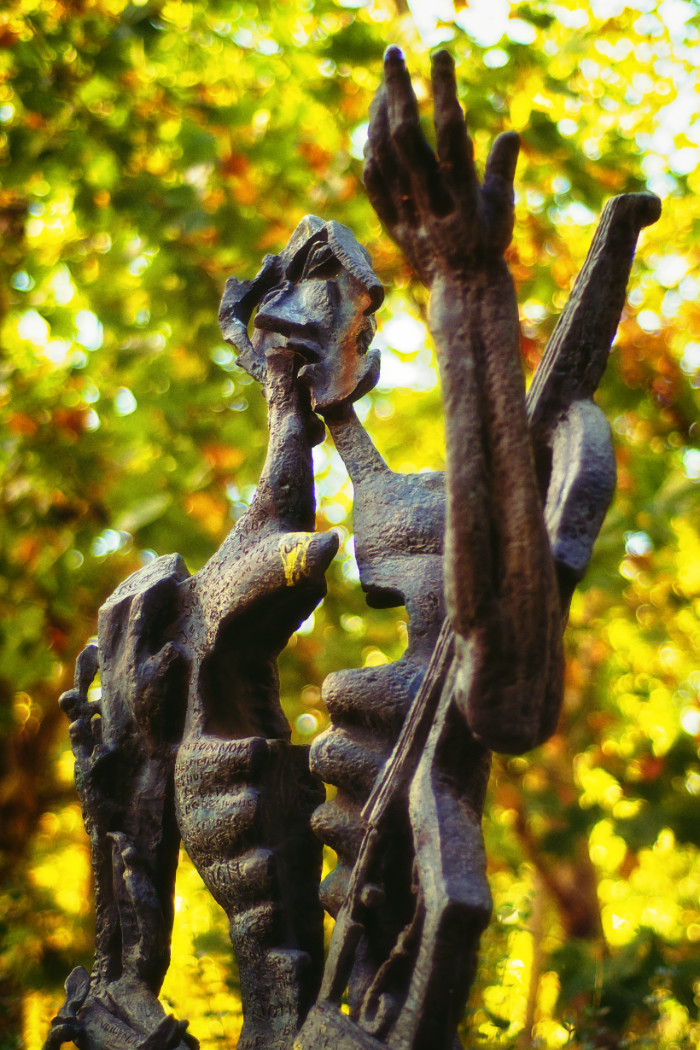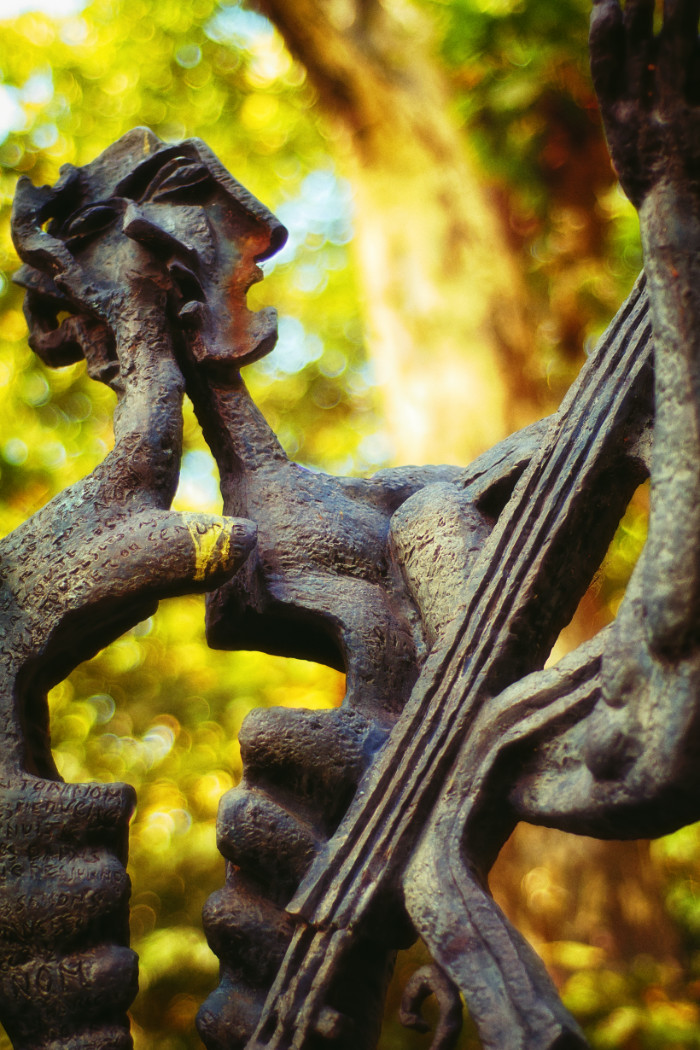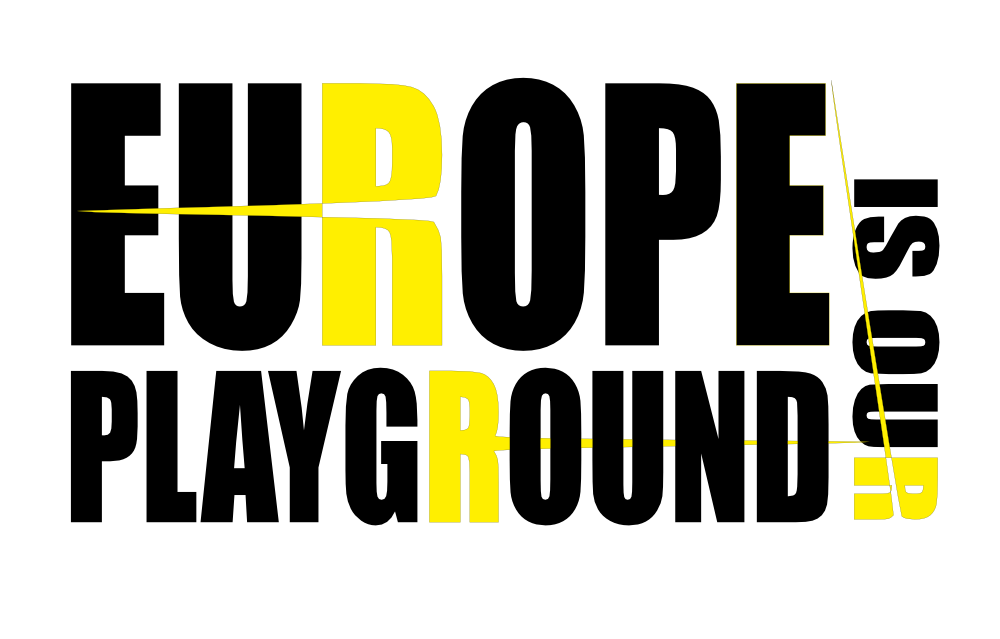The Poet In The Jardin du Luxembourg
Hidden in the western corner of the Jardin du Luxembourg amongst lush shrubbery and tall dark trees that block the sun, hides a poet. Rather, a surreal bronze depiction of the poet Paul Eluard, by the Russian-born artist Ossip Zadkine. The work is similar in style to Zadkine’s seminal work – ‘La ville detruite’ which stands in Rotterdam as a reminder of the destruction the city felt during WWII.
There are hints of Zadkine’s past cubist work here but Le Poéte is a more tribal effort with surreal overtones, the body marked by the words of Eluard’s poetry, as the skeletal frame holds a double bass, his hand raised as he recites the words he loved so much. It’s an affectionate and impassioned memorial. But I’d like to talk about the poet himself.
The poet Paul Eluard, was a dadaist and responsible for the creation of the surrealist movement along with André Breton, which he later rejected, whilst pursuing his political interests. But not before he had contributed some of the genres most notable works.
Much of Eluard’s poetic work is stark and romantic, yet inwards and dark. One piece stands out in particular, from his later writings, during WWII – and named rather aptly ‘Liberté’. It’s not the poem that stands out so much, not when one considers his earlier works that were perhaps slightly more intriguing for their elements of surrealism, but rather the story that is attached to the poem and the way it was able to empower the French, who were under Nazi-occupation at the time.
It was written in the summer of 1941 and published clandestinely in England in 1942, after-which copies of the poem were parachuted by RAF planes over occupied French cities, landing in the hands, towns and cities of the French people and offering at least a small glimmer of hope that they would once again feel the loving hand of Liberté and freedom.
It’s a wonderful story.
It’s important that we remember works such as this, especially now when the UK and the EU are to be torn asunder – at the behest of people like myself and much of the youth of the UK. I feel that some people have forgotten what was really fought for in the world wars. It was for this Liberté that Eluard spoke of, and it was for freedom from oppression. But what came of it was perhaps even more important: the union of a people much greater than the sum of their parts, unique in cultures but intertwined by art, music, the desire to live freely, share stories and eat fantastic foods.
It was a win for the people. For all people, so that they could be free to move, free to think and create without censorship, and free to be European. This is why the European Union exists, and it has long been artists that have glued the seams, helping to narrow the gap between countries by showcasing what it means to be English, French or German – and showing their art to the world. The UK’s people haven’t forgotten this, but I believe some simply don’t care – too wound up by promises and desires, mired by delusions of grandeur and a belief that there is always an enemy, and that that enemy is once again in Europe. When of course nothing could be further from the truth.
I think that we almost figured out what being European means over in Britain, but just as we have, those ignorant of the virtues of cohesion have begun to take it away from us, and so I think it’s important that we remember both the poem that spoke of Liberté and the sculpture that remembers ‘Le Poete’, – for both, at their very hearts tell the story of Europe, from immigration to the disease of war, and how we must work together, we must create experiences and foster art, embrace each other closely and never force our worlds apart.


Zadkine’s sculpture of the poet Paul Éluard sits in the western part of the Jardin de Luxembourg. It is a stark and beautiful homage to one of the fathers of surrealism. To read the poem ‘Liberte’ in French and English take a look here and to see more of Zadkine’s work visit his former home in Paris which is now a museum.
